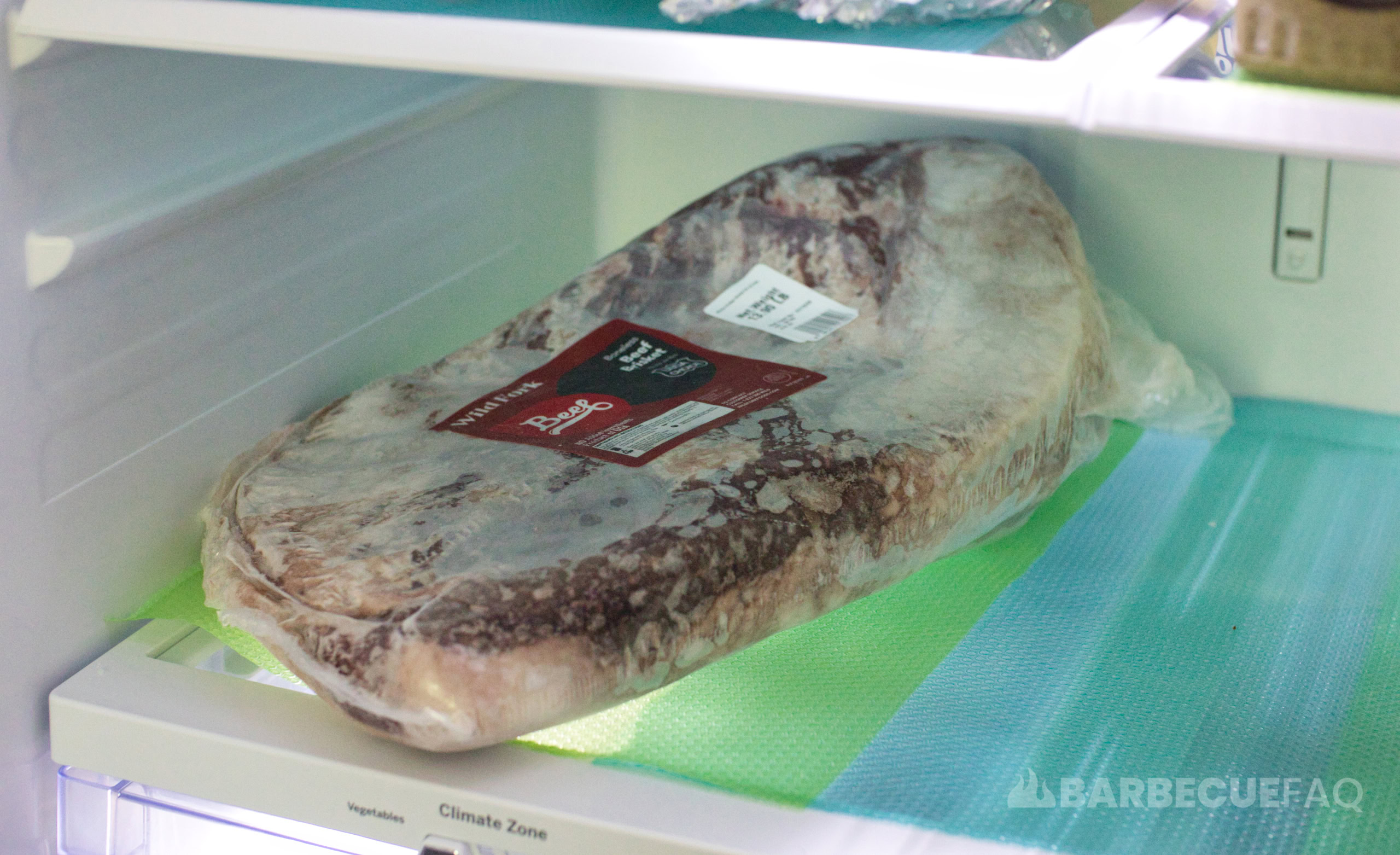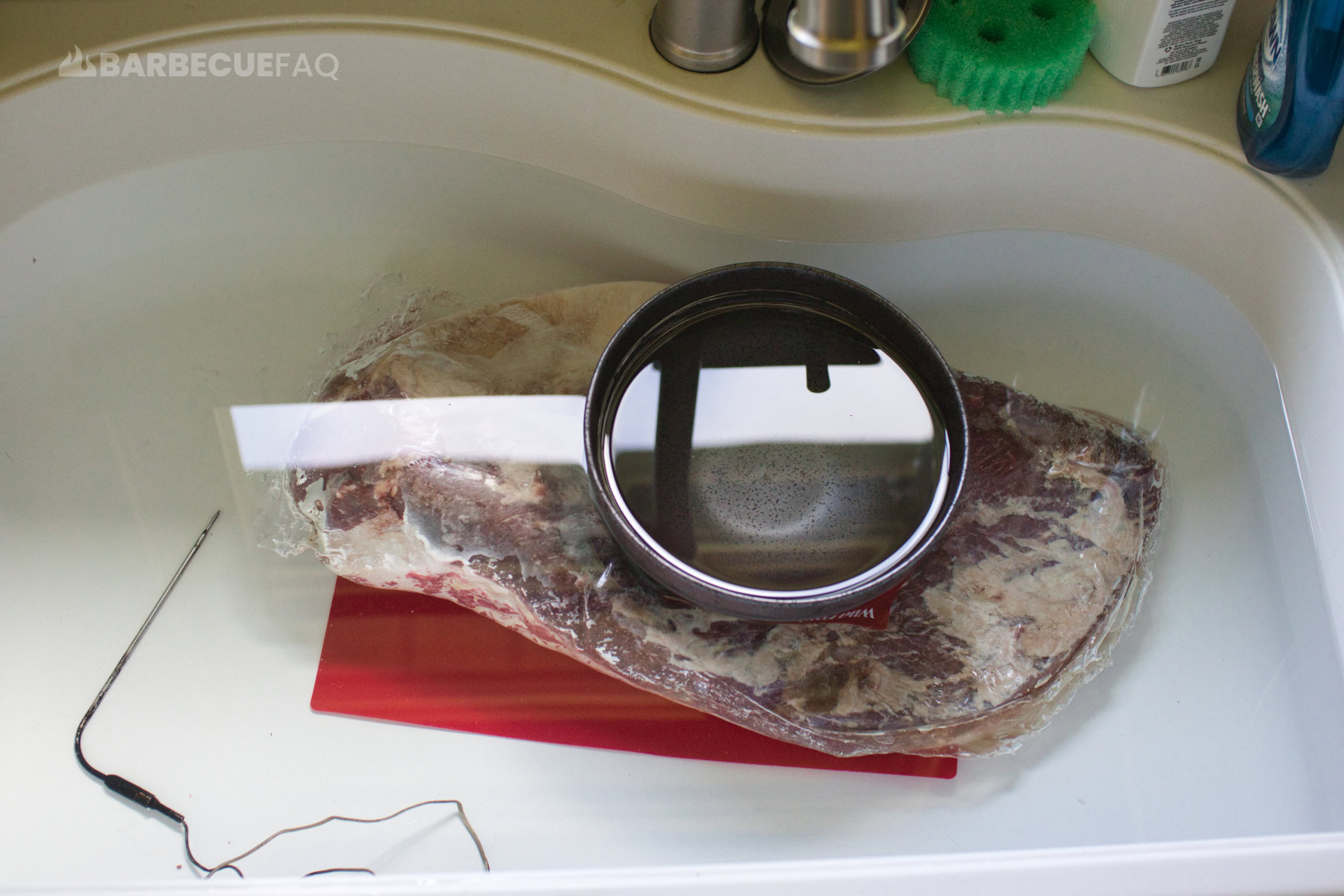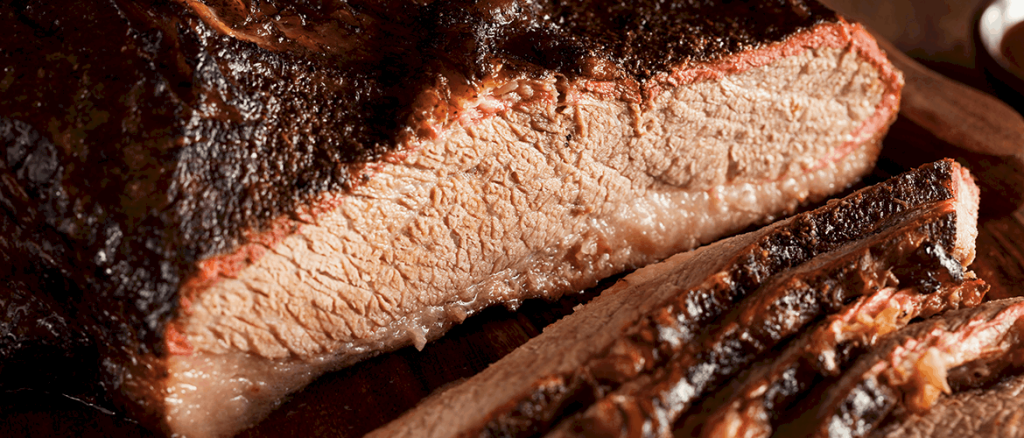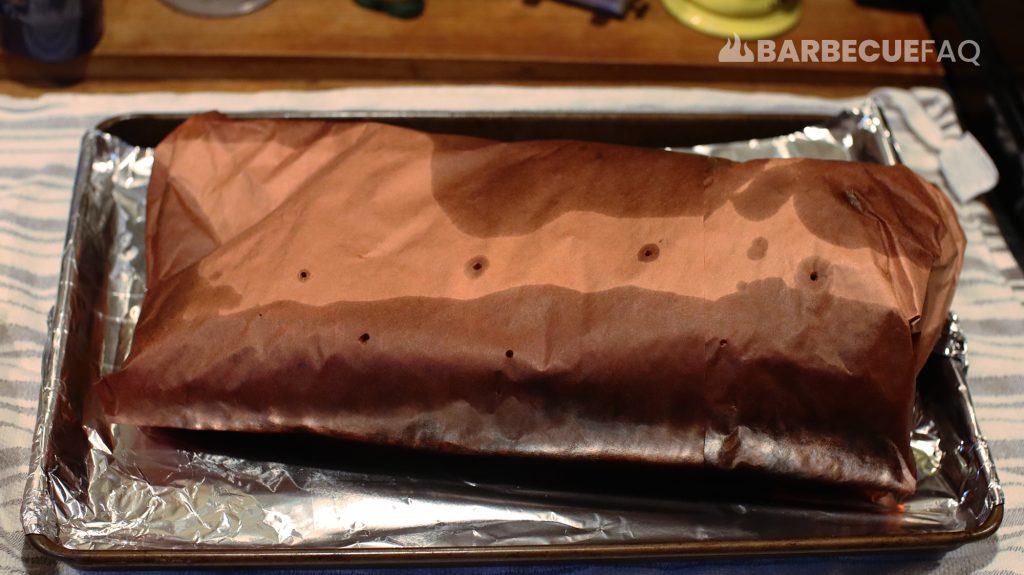1. Place Frozen Brisket on the Bottom Shelf of Your Refrigerator in the Vacuum Packaging.
For this article, the brisket pictured below weighed 13.9 lbs and was thawed in roughly 2 days.

The USDA notes:
“A large frozen item like a [brisket] requires at least a day (24 hours) for every 5 pounds of weight.”
USDA.gov
Using their math: 13 lbs would be 2 days and 16.8 hours; So I’d say their timeframe is accurate.
Brisket that has thawed in the refrigerator should be used in 3-5 days.
If you end up not using it, it can be safely re-frozen, however thawing and re-freezing will lower quality.
This is because when meat is frozen, the water in the muscle cells freezes and turns into ice crystals. These ice crystals have the potential to disrupt cell walls. When thawed, these now disrupted cell walls will release moisture.
Brisket is more easily trimmed when slightly frozen but still malleable – typically when I thaw, I’ll wait till it’s slightly thawed but not completely.
Warm fat tends to smear when it’s completely thawed and being a tad frozen makes trimming much easier.
2. Thawing Brisket in a Cold Sink (or Bowl of Cold Water)
Clean your sink, block the drain, and then place your frozen brisket in the sink.
When placing the meat in the sink, you want to leave it in cryovac packaging.
The goal is to minimize the interaction between the raw meat and the external environment. We also don’t want the brisket to absorb water.

I like to place a bowl on top of the brisket and partially fill it with water as the residual oxygen within the vacuum will cause the brisket to float.

Every 30 minutes or so, drain the water and refill to ensure the water is as cold as possible.
Do You Need to Thaw Brisket Before Smoking?
Technically, it’s entirely possible to safely cook brisket from a frozen state.
The only real downsides:
- Longer cook time.
- You don’t get to trim any fat.
- Seasoning doesn’t stick to frozen meat.
Technically, frozen meat will attract more smoke due to the moisture from thawing – as smoke is attracted to wet surfaces. The longer cook time also means the meat is interacting with the smoke for a longer period of time.
While I’ve personally never smoked a frozen brisket, I know “old-heads” on barbecue forums have reported successful cooks.




